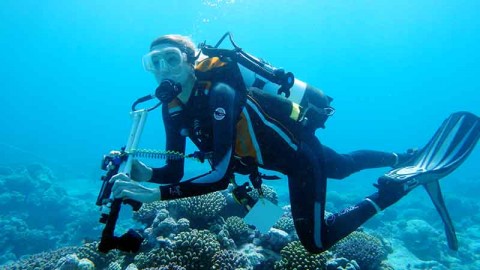BIOT Science Expedition 2014 - Getting the gear on - Day 1
Getting the gear on
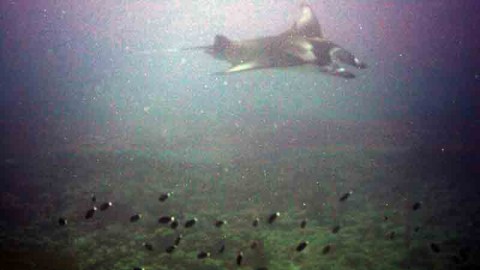
There are few things that will motivate a marine scientist to do dull tasks better than the prospect of an amazing dive. That prospect was a distant one when everyone arrived bleary eyed at the air terminal in Diego Garcia shortly before midnight yesterday. But we hustled them straight into a vehicle, or perhaps hustled their equipment onto a vehicle and squeezed them in somewhere between the piles of luggage they brought with them. Researchers are not renowned for packing lightly. Fortunately it was a short transit to the jetty where our vessel for the expedition was waiting.
We duly threw their gear onto the BIOT research boat which predictably resulted in the scientists scuttling on board in pursuit of their precious gizzits. All participants safely tempted on board the skipper cast off and we were away across dark waters. Bunks were sought and occupied with purpose. A good night’s rest would not only be a good soothe for a few days build up of jetlag but also set people up for what would be a full day of action starting in the morning.

Inevitably the day started with an interminable health and safety brief detailing the various ways which we should avoid maiming ourselves over the coming weeks. The side benefit of this process was that everyone in a fog of dulled senses agreed to help set up the entire dive infrastructure on board in two and a half hours in order to get a refresher dive in by mid-afternoon (that’s right, drills and briefs took up the entire morning). Their plight in being so deceived was soon overcome by the prospect of getting underwater in one of the most pristine and prolific coral reef environments on the planet. Not a shabby spot for a shake-out dive before the work starts in earnest on the morrow.

Now motivated, the tortoise pace of the mornings activities was replaced by a fervour of dive hungry preparation. Compressors set up, boats prepped, pony tanks fitted, fuel mixed, cylinders filled and boats in the water by 3 pm. Not bad from a standing start. Concurrent to this Pete and his shore party of avian enthusiasts readied themselves to get ashore on Ile Mapou. A reconnaissance trip for subtly accosting seabirds to fit radio tags on the following day.
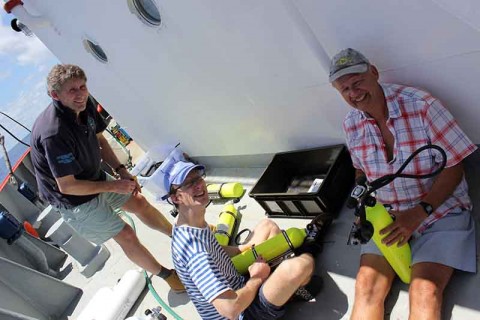
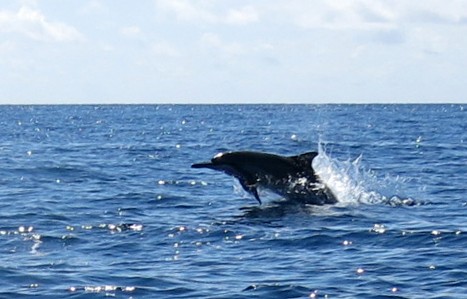
All the anticipation was not unfounded. Once deployed on the water in our dive dinghies the Salomon Atoll served up a rich late afternoon of treats for us as we tested our dive kit. A pod of dolphins gambled in the afternoon sun as we exited the lagoon. Huge grouper gaped at us as we dropped in at our selected dive site off the northern edge of Ile Anglaise. A lazily large manta appeared effortlessly out of the haze of dusk lit water before dissipating into a curtain of late afternoon sunrays slicing down through the water. A curious grey reef shark ushered us from the water back onto our dive boat and sent us, a happily dived up crew, back on our way to the research vessel.
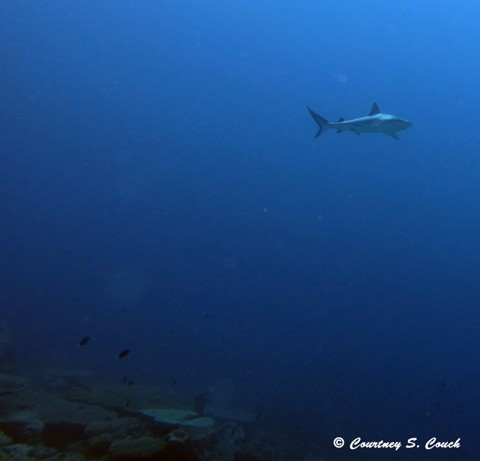
The evening threw up a final treat for the day. The opportunity to share the adventure of getting out here through a maze of logistical hurdles and administrative difficulty to the first viewings of the Chagos Archipelago’s environmental treasures with the crew of our sister research vessel out here provided by the Bertarelli Foundation. Whilst our vessel is a working boat turned to science. Their’s is a luxury motor yacht turned to the same task at the behest of the boat’s owner, a benefactor of the BIOT MPA. It was fantastic to share our first experiences of this amazing place with another science crew who are just drawing to a close with their work out here. Our work will compliment theirs as they have placed the gear to monitor sharks and large pelagics while we pursue the secrets of the reefs and smaller reef fishes and seabirds above. And so the pursuit of further knowledge of the natural environment in BIOT progresses...now to bed. More tomorrow!
